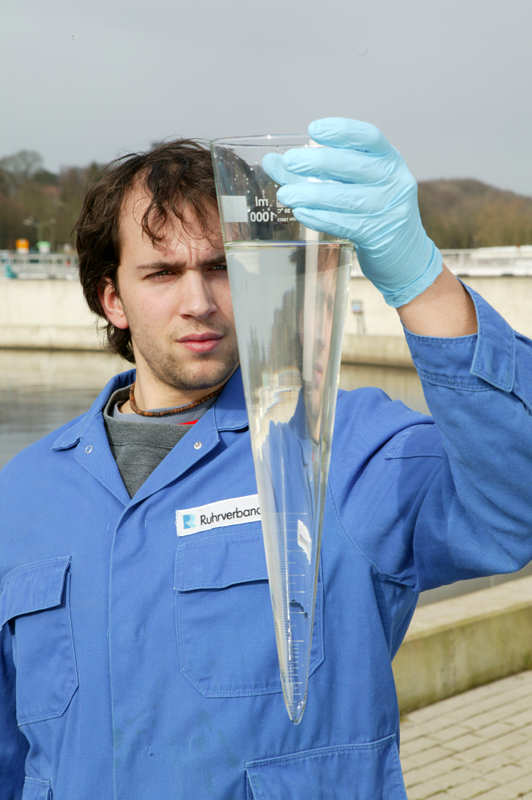Why water quality does not equal water quality
We need water to live. The Ruhrverband with more than 800 water management facilities and around 1,000 employees ensures that people in the region always have a sufficient supply of water in good quality. But how do you measure water quality? In general, water quality is defined by the composition of its constituents. The criteria and characteristics for assessing water quality, however, can vary greatly depending on whether you are looking at potable or non-potable water, the result of waste water treatment, the condition of bathing waters, or at the entire water ecology.
The quality of our water body is an area that has been highlighted by the European Water Framework Directive. The ecological status of a body of water is sub-divided into five categories (high, good, moderate, poor, or bad status) and assessed accord-ing to biological, hydromorphological, and physico-chemical criteria. The population of fish and aquatic plants in a body of water is also indicative of its water quality.
Water quality in bathing waters is assessed primarily using hygienic parameters (e.g. Escherichia coli). According to the annual European report of bathing water quality, the bathing places designated by the Ruhrverband in some of its reservoirs have an 'excellent' or 'good' water quality for bathing.
Sewage is discharged into the body of water after treatement. In order to protect our water, emissions such as chemical oxygen demand and the level of plant nutrients such as phosphorus and nitrogen should be kept as low as possible. Besides these quality parameters, the structure of a body of water is also important.
Moreover, improved methods of sewage analysis have also moved micropollution into the centre of attention.
With regard to drinking water, the main focus is on achieving impeccable hygiene and a minimum load of harmful trace substances such as heavy metals and pesticides.









